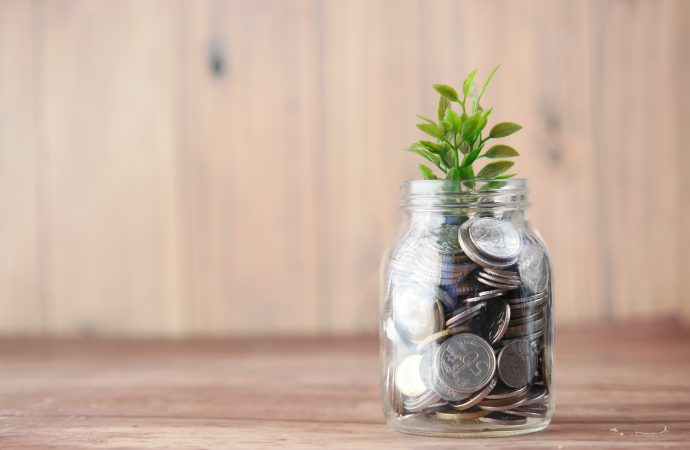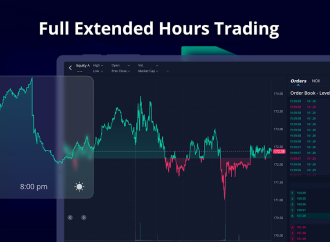Are you tired of constantly worrying about unexpected expenses and financial emergencies? It’s time to create a safety net for your finances. Building an emergency fund can give you peace of mind and protect you from falling into debt. Not sure where to start? We’ve got you covered! In this post, we’ll show you step-by-step
Are you tired of constantly worrying about unexpected expenses and financial emergencies? It’s time to create a safety net for your finances. Building an emergency fund can give you peace of mind and protect you from falling into debt. Not sure where to start? We’ve got you covered! In this post, we’ll show you step-by-step how to go from rainy day savings to a fully-funded emergency fund, so that you can face any economic challenge with confidence. Ready to take control of your financial future? Let’s get started!
How Much Should You Save in Your Emergency Fund?
When it comes to saving for an emergency fund, there is no one-size-fits-all answer. The amount you should save depends on a variety of factors, including your income, expenses, and the stability of your job.
If you’re just starting out, aim to save at least $500. This will cover most small emergencies, such as a car repair or a doctor’s visit. Once you have a bit more saved up, you can increase your goal to $1,000 or more. This will help you cover bigger expenses, such as a major car repair or a medical procedure.
If you live in an area with high costs of living or if your job is unstable, you may want to save even more. Aim to have enough saved so that you could cover several months of living expenses if you were suddenly unable to work. This will help ensure that you can keep up with your bills and avoid going into debt if an emergency arises.
No matter how much you have saved, it’s important to remember that an emergency fund is for unexpected expenses only. If you find yourself dipping into your emergency fund regularly, it’s time to reevaluate your budget and make some changes.
Where to Keep Your Emergency Fund
When it comes to saving for an emergency fund, one question that commonly arises is where to keep the money. Some people like to keep their emergency fund in a savings account at their bank, while others prefer to keep it in a separate account altogether.
There are pros and cons to both options, so it’s ultimately up to you to decide what will work best for you and your situation. If you’re thinking about keeping your emergency fund in a savings account at your bank, here are some things to consider:
Convenience: One of the biggest advantages of keeping your emergency fund in a savings account at your bank is convenience. If you have a checking account at the same bank, you can easily transfer money back and forth between the two accounts as needed. And if you need to access your emergency fund in a pinch, you can usually do so without any problems.
Safety: Another advantage of keeping your emergency fund in a savings account at your bank is safety. Your money will be FDIC-insured up to $250,000, so you don’t have to worry about it losing value or disappearing altogether.
Interest Rates: One potential downside of keeping your emergency fund in a savings account at your bank is that interest rates on these accounts are often quite low – sometimes even 0%. This means that while your money will be safe in the account, it likely won’t grow very much over time.
Now
How to Build Your Emergency Fund
If you’re like most people, you probably don’t have much of an emergency fund. In fact, according to a recent survey, nearly 60% of Americans have less than $1,000 in savings.
Building an emergency fund is one of the best things you can do for your financial security. It gives you a cushion to fall back on in case of unexpected expenses, job loss, or other financial emergencies.
Here are some tips for building your emergency fund:
1. Decide how much you need to save. A good rule of thumb is to save enough to cover 3-6 months of living expenses.
2. Make it automatic. Set up automatic transfers from your checking account to your savings account so that you’re automatically saving each month.
3. Start small. If you’re not used to saving, start with a small amount each month and gradually increase it as you get more comfortable with the idea of setting aside money each month.
4. Keep it liquid. Keep your emergency fund in a savings account or money market account so that you can easily access it when needed.
Using Your Emergency Fund
If you find yourself in a financial emergency, your first instinct may be to reach for a credit card or personal loan. However, if you have built up an emergency fund, you can avoid going into debt and weather any storm.
When it comes to using your emergency fund, there are a few things to keep in mind. First, only use the money in your emergency fund for true emergencies – unexpected expenses that you cannot afford to pay out of pocket. Do not dip into your emergency fund for non-essential purchases or unplanned travel.
Secondly, as tempting as it may be to deplete your entire emergency fund at once, try to only use what you absolutely need. This will help ensure that you have funds remaining in case of another unforeseen event.
Lastly, once you have used funds from your emergency fund, make sure to replenish it as soon as possible. This will give you peace of mind knowing that you have a safety net in place for the future.
Replenishing Your Emergency Fund
We all know that feeling too well – the one where your stomach drops and your heart races as you realize you’re about to overdraw your checking account. Or when you get hit with an unexpected car repair bill and don’t have the cash to cover it. That’s why it’s so important to have an emergency fund: a stash of cash set aside specifically for unplanned expenses.
Ideally, your emergency fund should be enough to cover three to six months of living expenses. But if you’re just starting out, even a smaller amount can make a big difference. The key is to replenish your fund as soon as possible after you’ve had to dip into it.
Here are a few tips for replenishing your emergency fund:
– Make it a priority: Add “replenish emergency fund” to your list of financial goals, and treat it like any other bill you have to pay. Automate transfers from your checking account to your savings account so you don’t have to think about it.
– Cut back on expenses: Take a close look at your budget and see where you can cut back in order to free up some extra cash. Even small changes can add up over time.
– Sell unwanted items: Got some stuff around the house that you don’t need? Have a garage sale or sell items online to raise some extra cash.
Conclusion
Building a safety net for your finances is an essential part of financial planning and security. From rainy day funds to emergency savings, there are several ways to build your own personal safety net that will help protect you against unforeseen expenses and provide peace of mind when it comes to managing your money. By taking the time to create a budget, understand what kind of saving accounts are available, and determine which one best suits your needs, you can be well on your way towards building a secure financial future.





















Leave a Comment
Your email address will not be published. Required fields are marked with *